Narratives
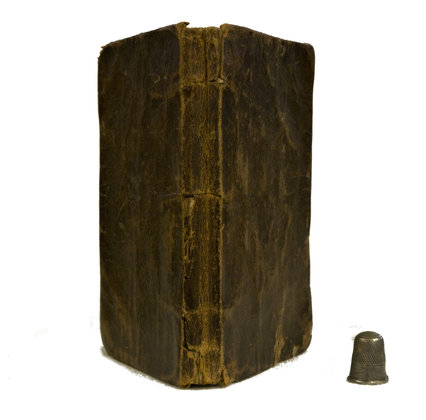
Pilgrim's Progress
John Bunyan’s Pilgrim’s Progress from This World to That Which is to Come, Delivered Under the Similitude of a Dream (1678) was one of the most popular works of literature in the nineteenth century, likely second only to the Bible. Despite increased reading of novels and other forms of secular literature, this Christian allegory remained popular. In Britain, it was available upmarket and downmarket in a variety of forms. Illustrated editions, for example, could provide distinction, but also reach those who could not read or who read at a low level. It was awarded to Sunday school students, gifted to family and friends, and expensively bound by those who could afford it. Ships to the British colonies were heavy with copies of Pilgrim’s Progress; it was also translated into many languages, making its way beyond Britain, Europe and the New World to India, Africa and elsewhere.
Lessons for Little Learners
Literature produced for or read by children in the Romantic period included fiction and non-fiction, poetry and prose, chapbooks, picture-books, novels, magazines and more; it was available upmarket and downmarket; it could be entertaining, it usually intended to instruct, and it sometimes did both. During a period of changing attitudes to parenting and childhood, expansion of the print industry, and increased attention to literacy, reading and education, literature for children enabled a means of shaping the tastes, habits and interests of young readers, and possibly of improving their chances of getting on in life. Religious organizations and popular publishers recognized and furthered the growing consumer market for children’s literature by creating works differing in presentation, content, format and price throughout the period.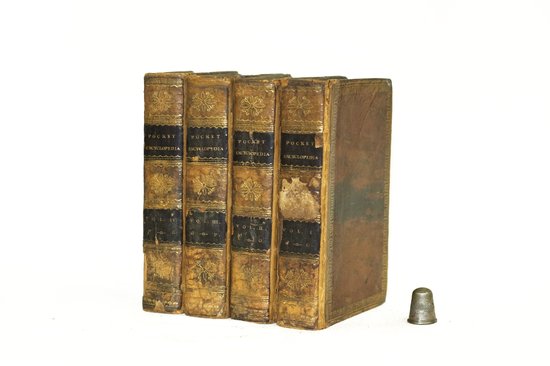
Knowledge Generation
In the Romantic period middle- and working-class readers read what they could get and what was of direct relevance to their own lives. Along with literacy, education was an important means of attaining or improving one’s position or social standing, providing for oneself and family. This often meant learning for a specific trade, but upwardly-mobile men and women were also interested in intellectual improvement and skill development as well as practical information applicable to the home. The print forms of ‘knowledge’ were not restricted to poetry and novels, but included dictionaries, encyclopedias, portfolios, handbooks and other non-fiction works that taught people about science, the arts and other things relevant to daily life. The 'generation' of such knowledge referred to in the title of this narrative speaks to the upmarket and downmarket dissemination of such works, and also to the people who were enabled to improve their lot in life as a result.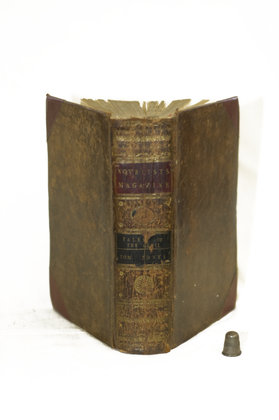
Novels of Interest
Thousands of novels were published in the Romantic period in Britain. There were romance, gothic, national, sentimental, historical, adventure, society, Newgate, silver spoon and other sorts of novels for men and women published upmarket and downmarket in a variety of forms. Novels were bought new from shops or rented from circulating libraries. Due to the high price, most novel readers were at least middle-class. Cheaper out-of-copyright novels became more widely available throughout the period, especially with advances in printing such as stereotyping. Downmarket collections and serialization also increased the dissemination of both new and older works.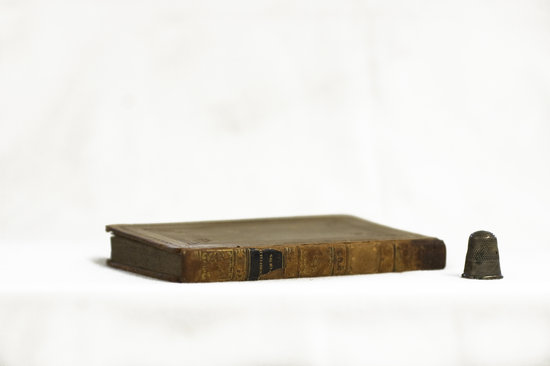
The Darton Family
The firms of Harvey and Darton and W. Darton were two of the most prolific publishers of popular literature in the Romantic period. William Darton Sr., Samuel Darton, and William Darton Jr. all specialized in children's literature but also published jigsaw puzzles, poetry collections, and other works of social, scientific, and religious interest. The Darton family was proficient in all aspects of the printing and publishing business. They were flexible and skilled enough to produce books, chapbooks, and collections using stereotyping, collective publishing, innovative pricing, high-quality illustrations by popular authors who could write entertaining stories that offered useful knowledge. While the Dartons’ sustained focus on children’s literature throughout their careers is indicative of the genre’s burgeoning popularity in the nineteenth-century, it is also a reflection of their Quaker values. The dedication of the Society of Friends to moral reform and social regeneration manifested itself in a variety of causes, including an active interest in the rearing and education of children. The influence of the Dartons’ religious context is evident both in their choice of publications and in the particularly reformist tenor of the literature published by their firms. Broadly targeting a predominantly middle-class readership, their publications contributed to shaping the values of Britain’s dynamic middle-class culture.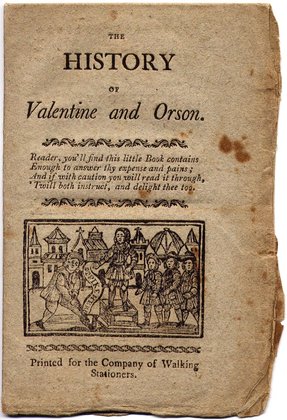
People's Pamphlets
Chapbooks began as a sort of printed folklore. Early popular stories disseminated by travelling salesmen or colporteurs included secular adventure narratives such as Jack and the Giants and Robin Hood. They had the quaint woodcut illustrations, but had broader scope than the ballads. Later chapbooks varied considerably in content, theme and language; they were often adapted from popular novels for specific audiences and political purposes. Most chapbooks were 8-32 pages in length and sold for as little as a halfpenny and usually for less than sixpence, thus making them widely available to the working classes. They were available in the city and the countryside, often available at fair or market days. They supplied the poor with samples of every sort of literature.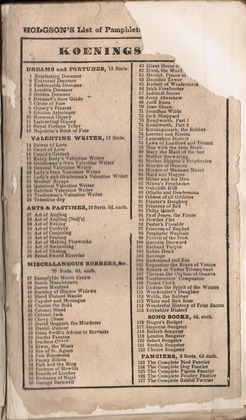
Gothic Chapbooks
Gothic chapbooks made the gothic genre accessible to the working classes. They were often abridgements of popular novels or adaptations of melodramas and poems; others were loosely based imitations of longer texts and original stories. Although they did not have the space to examine emotional responses or thought processes in depth, gothic chapbooks incorporated themes, settings, and motifs common to many such works. Settings tended to be geographically and temporally remote, often medieval or renaissance Italy, Spain, Germany, or France, and sometimes other more exotic locations. Castles, dungeons, towers, subterranean passages, trap doors, crypts, tombs, and other dark, mysterious spaces were common, as were supernatural phenomena such as ghosts, demons, werewolves, vampires, or the machinations of monstrous villains. Like the better-known novels of M.G. Lewis and Ann Radcliffe, gothic chapbooks employed suspense techniques to evoke pleasurable feelings of terror, thus ‘transporting’ readers into the fictional world of the narrative.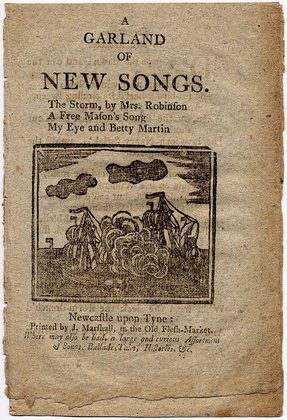
Price Point
In the Romantic period a labourer earned about ten shillings (120 pence) a week to support a family. The established downmarket price point, or threshold of profitability and affordability accepted by publishers and purchasers was sixpence. Socio-cultural meanings of material features and pricing interacted. Different forms were available and of interest to upmarket and downmarket readers. For example, a ballad, story sheet, or old-style chapbook tale might cost a penny or less; a ‘modern’ fiction pamphlet or serial ‘number’ of a novel was sixpence; a volume-length novel could cost a few shillings, a several-volume novel ten to thirty, and a reprint series several pounds (each twenty shillings). This narrative provides examples of such formal and commercial differentiation to describe resulting markets and readerships.
Garlands in Newcastle
A garland is small book of ballads, usually eight pages in length, printed cheaply on thin paper, often with a woodcut on the cover and the binding composed of string, if anything. The term ‘ballad’ refers to the popular or traditional song type that appeared from around the end of the thirteenth century and was at its height during the sixteenth and seventeenth centuries, when ballad singers plied their trade in cities and around village fairs. Outside of London, Newcastle upon Tyne was a centre of popular print in England throughout the Romantic period, offering chapbooks, broadsides and songbooks of various sorts to meet the needs and interests of downmarket readers.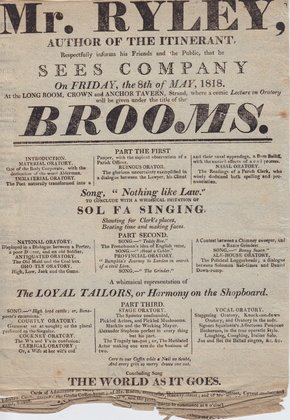
Spectrum of Fiction
The spectrum of Romantic fiction includes ephemeral forms such as notices, announcements, and receipts; the single ballad- or story-sheet; the pamphlet novelette, ‘garland’ of songs, or play; the chapbook, original or adapted; the magazine or newspaper containing fiction; the weekly or monthly ‘number’ or portion of a book; the volume-form literature anthology for school or drawing-room; the single- or several-volume fictional work such as the ‘triple-decker’ (three-volume) and ‘circulating-library’ novel; and the various multi-volume collections of novelists, poets, and dramatists. Convergent with technological and commercial innovations, the proliferation of genres and forms during the period catered and contributed to a growing, fragmented market of readers.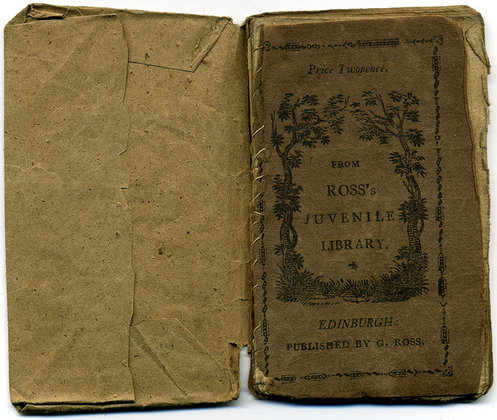
String to Morocco
Every cover tells a story: a loose piece of string holding together the faded yellow paper cover of a chapbook for children; a three-decker novel bound in morocco with gilt engraving destined for the mantle or the library in an upper middle-class home. The attractive paper covers of pamphlet fiction promised intense pleasure and sensational contents, and enabled publishers to diversify and extend the market for cheap literature. New book-form fiction could be sold in ‘sheets’ (sewn signatures), (paper-covered) ‘boards’, part-leather, or (later) cloth binding, or custom bound, often lavishly. Covers and bindings indicated different material, cultural, and social valuation of copies of the same work; they also reflected and contributed to the diverse print market of the Romantic period.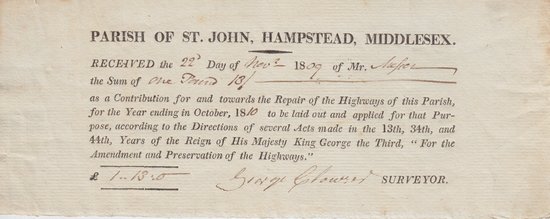
Everyday Print
Print became a part of everyday life in the Romantic period. Some could afford to read upmarket poetry, novels and encyclopedias, others only downmarket chapbooks, garlands and ballad- or story-sheets, but common forms of ephemeral print were increasingly important to the way people from all walks of life communicated with each other and managed their affairs. Many such forms no longer exist, but what remains of the receipts, advertisements, announcements, insurance documents, and other forms help us to understand the way people lived their lives. They could, for example, enable accountability, communication, and organization, as well as security, hope, or amusement. The study of popular print history demands an account of all the forms that helped people get on in life, and not just those usually found in the classroom.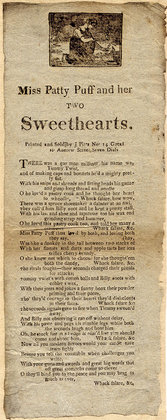
J. Pitts, 7 Dials
Ballad-sheets are single sheets of paper with a ballad printed on one side – a cheap, ephemeral form of street literature to be sung. All ballads are essentially short narrative poems, but different from region to region, and within regions, according to lyrical elements and quality, relative to the conditions of production and reception, as well as the interests of publishers and readers. The anonymous ballad-sheets collected here were printed and sold by popular publisher John Pitts at Seven Dials, a notorious London slum in the nineteenth century. Stories of love, marriage and courtship, as well as adventure at sea, are common; some are drinking songs, others are comical and/or topical; all are anonymous but many were known to readers, through oral tradition or by way of other downmarket forms such as chapbooks; others demonstrate varied form and content for increasingly literate, urban readers.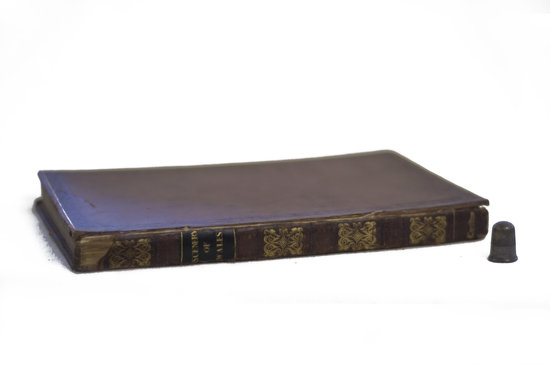
Home and Away
Travel literature was one of the most widely read genres of the Romantic period. The weighty works of travel writers were largely available to upmarket readers due to their high cost, although the cheaper pocket-sized editions that began appearing in the late eighteenth-century and the lengthy excerpts from new travelogues featured in periodicals made the genre more widely available. Travel literature was a complex genre intended both to instruct and to entertain. The content of travelogues appealed to a broad range of interests and was easily and frequently adapted to meet the changing tastes of the public. Ethnographic description, antiquarian examination, scientific observation, and cataloguing of sites were interspersed with aesthetic contemplation, personal reflection, political polemic, humorous or sentimental anecdotes, poetry, and gothic tales. The Romantic period witnessed a gradual separation between literary and technical travel writing; guidebooks emerged in the early nineteenth century to address the practical concerns of an increasingly mobile middle class, while the literary travelogue became less concerned with the mechanics of travel and increasingly emphasized introspection and the operation of the imagination.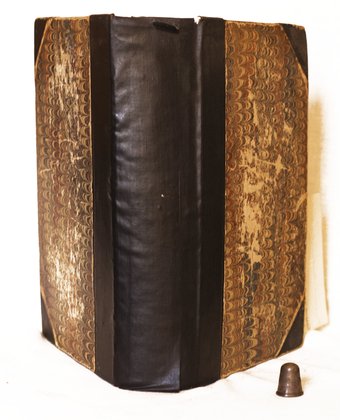
Popular Poets
In the Romantic period, the popularity of poetry as a literary form allowed poets to become exceedingly popular figures. Although some poets gained popularity through successful initial print runs, such as Lord Byron and his massively successful Childe Harold’s Pilgrimage, others gained popularity through public honors, such as poet laureates Robert Southey and William Wordsworth. Popularity was also achieved through social success, as seen with Samuel Rogers and his vast network of artistic associates, or even through notoriety based on controversial or revolutionary ideas, as in the case of the Godwin-Shelley circle. With the emergence of nineteenth-century print culture, re-editions and anthologies, such as The Pocket Magazine of Classic and Polite Literature, provided greater opportunities for Romantic poetry to enjoy a broader readership. The frequent anthologizing of poetry during the Romantic period initiated a tradition of re-collecting poems which has continued in the centuries following their initial composition. The Romantics’ constant appearance in anthologies, literary collections, and subsequent re-editions has greatly contributed to the persistent popularity of Romantic poetry and poets by sparking renewed interest in famous texts, such as Keats’ Ode on a Grecian Urn, Byron’s She Walks in Beauty or Shelley’s Ode to the West Wind. Popular Romanticism features many of these "popular poets" and can be employed to effectively demonstrate the various means of packaging and disseminating poetic verse during the Romantic period. This narrative currently features Lord Byron, Thomas Campbell, Samuel Rogers, George Crabbe, Thomas Moore, and Robert Southey.

